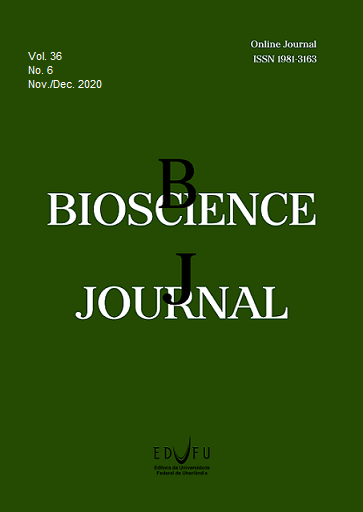Sowing density and clipping management: effects on the architecture and yield of dual-purpose wheat
DOI:
https://doi.org/10.14393/BJ-v36n6a2020-48207Keywords:
Triticum aestivum L., Phenotypic plasticity, Intra-specific competition., Canopy adjustment of plants.Abstract
The dual-purpose wheat stands out as a complementary alternative for forage supply during the winter period. Therefore, this work had the objective of evaluate the performance characteristics in five genotypes of dual-purpose wheat submitted to different sowing densities and different clipping managements. The experiment was carried out during the 2016 and 2017 harvests. The experimental design was a randomized block design, organized in a factorial scheme, with five dual-purpose wheat genotypes (BRS Tarumã, BRS Umbu, BRS Figueira, BRS Guatambu and BRS 277) x five sowing densities (75, 150, 225, 300 and 375 seeds m²) x four clipping operations (zero, one, two and three clippings), arranged in three replicates. The measuring of characters were number of fertile tillers, seeds yield, angle of flag leaf, chlorophyll content and flowering. The genotype BRS Tarumâ is superior in number of fertile tillers and chlorophyll index for all the sowing densities, as well, the flowering is influenced direct by clipping managements. The sowing density of 75 seeds m-2 is not indicated for dual-purpose wheat independent of the clipping management. The seeds yield is amplified thought the increase in sowing density, however, advancing in clipping levels there is a decrease in forage yield.
Downloads
Downloads
Published
How to Cite
Issue
Section
License
Copyright (c) 2020 Francielen Lima da Silva, Ivan Ricardo Carvalho, Maurício Horbach Barbosa, Giordano Gelain Conte, Danieli Jacoboski Hutra, Natã Balssan Moura; Velci Queiróz de Souza

This work is licensed under a Creative Commons Attribution 4.0 International License.





